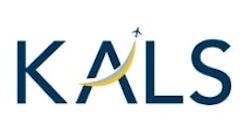NTSB Publishes Additional Comments on Ethiopia’s Final Report on 737 MAX 8 Accident
The National Transportation Safety Board released additional comments on the Ethiopian Aircraft Accident Investigation Bureau’s (EAIB) final report of the March 10, 2019, crash of Ethiopian Airlines flight 302, a Boeing 737 MAX 8 airplane.
The new comments, provided to the EAIB’s investigator-in-charge, detail the NTSB’s concerns about several of the findings in the final accident report. This is in addition to the comments the NTSB made public on Dec. 27 on the EAIB’s final accident report, which detailed the investigation’s insufficient attention to the human performance aspects of the accident.
The EAIB issued its final report without giving the NTSB the opportunity to review new information incorporated since the NTSB’s last review and provide comments ahead of the report’s issuance, as stipulated by the International Civil Aviation Organization’s Annex 13.
Although the NTSB agrees with the overall finding in the EAIB report related to the role the Maneuvering Characteristics Augmentation System (MCAS) and related systems played in the accident, the EAIB’s report contains findings the NTSB said are unsupported by evidence — for example, that aircraft electrical problems caused erroneous angle-of-attack (AOA) output.
In its final report, the EAIB wrote electrical anomalies that existed since the time of the accident airplane’s production caused the AOA sensor heater to fail, which resulted in the AOA sensor providing erroneous values that caused MCAS to repeatedly pitch the nose of the airplane downward until it struck the ground.
But the NTSB found the erroneous AOA sensor output was caused by separation of the AOA sensor vane due to impact with a foreign object, which was most likely a bird. During the accident investigation, the NTSB provided the EAIB with evidence supporting this finding, but that evidence was not included in the final report.
The NTSB also said the EAIB’s finding about the lack of MCAS documentation for flight crews was misleading since Boeing had provided the information to all 737 MAX operators four months before the Ethiopian Airlines crash.
The complete text of the NTSB’s comments is available online.
RELATED MATERIAL
• Dec. 27, 2022 (news release): NTSB Releases Comments on Ethiopia’s Investigation of the Boeing 737 MAX 8 Accident
• Investigation of Lion Air Flight 610 and Ethiopian Airlines Flight 302
• Sept. 26, 2019 (news release): NTSB Issues 7 Safety Recommendations to FAA related to Ongoing Lion Air, Ethiopian Airlines Crash Investigations
• March 14, 2019 (news release): NTSB Sends Additional Investigators to Assist in Ethiopian Investigation




